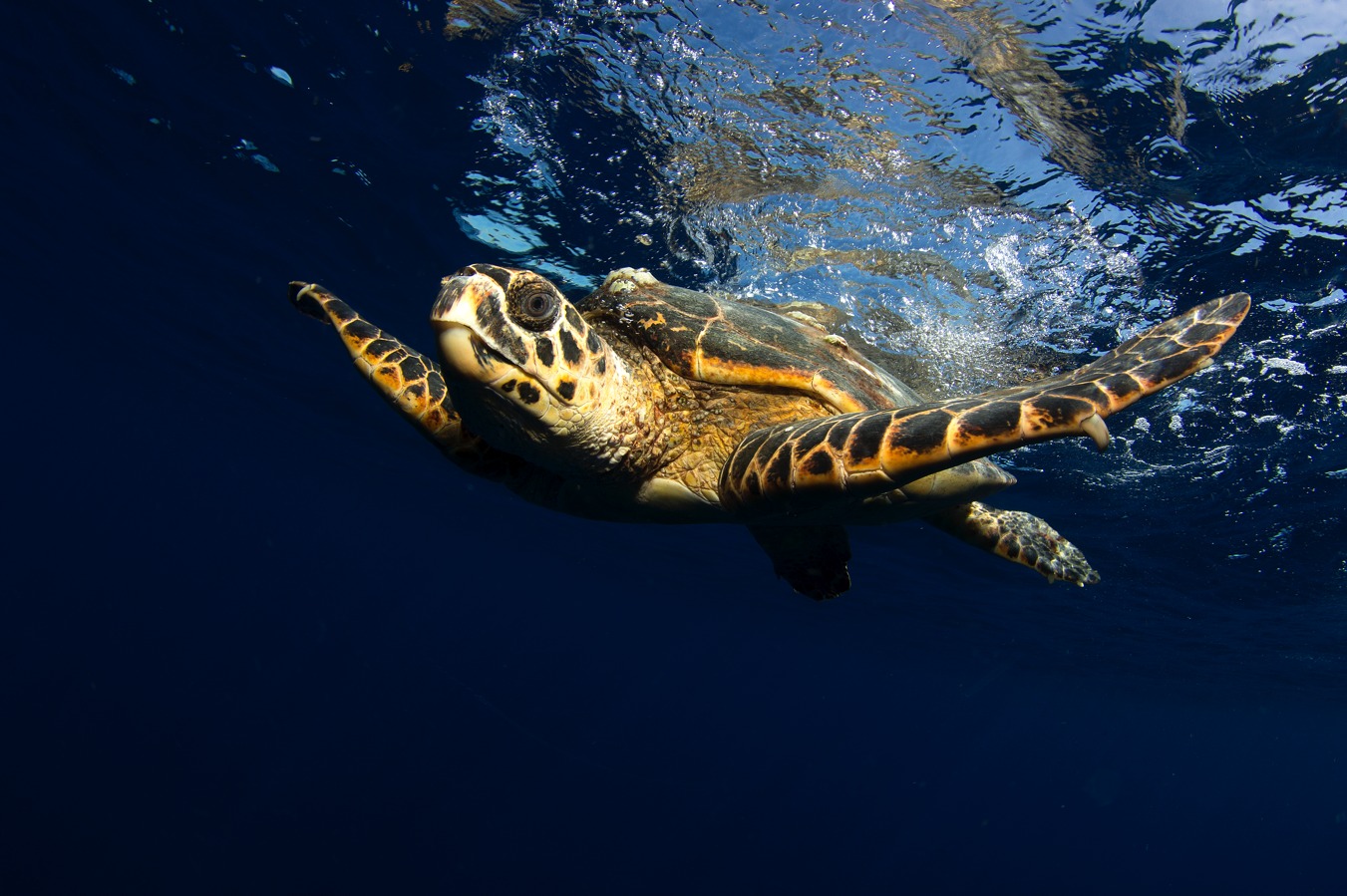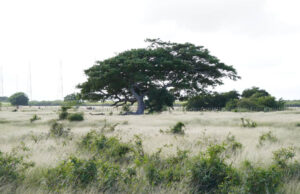The reproductive stage of turtles is a spectacle of resistance and natural precision, marked by epic migrations, nocturnal nesting rituals and a constant struggle for survival from the first instant of life.
Pollution, climate change, the destruction of their habitats and indiscriminate fishing turn their existence into an act of perpetual bravery. The ocean, which should be their refuge, is often a deadly trap; nets, plastics and the loss of nesting beaches trace an uncertain destiny.
Thus, every turtle that manages to wrest a sigh of life from the world is a miracle against all odds, a testimony to the fragility and strength that dwell in the very heart of nature.
Sensitised to these reptiles and committed to preserving them, members of the Playa Prohibida Work Collective, belonging to the Provincial Flora and Fauna Enterprise, and park rangers or technicians from the Vigilance and Protection service of the Centro-Oeste Ecological Reserve in Cayo Coco, in the north of Ciego de Ávila province, integrated with officers from the Border Guard Troops of the Ministry of the Interior, protect and monitor six turtle nests recently identified in that protected area.
This represents an event, as the northern Avilanian cays are considered of low nesting frequency for turtles.
In recent declarations to the Cuban News Agency, Doctor of Sciences Julia Azanza Ricardo, director of the Centre for Marine Research at the University of Havana and member of the Marine Turtle Specialists Group, belonging to the International Union for Conservation of Nature, affirmed that the main nesting zones are located in the southern part of the country; nevertheless, these chelonians are distributed throughout the Cuban archipelago, where reports exist of five species, of which four spawn in this area.
UNDER GOOD PROTECTION
The characteristics of Playa Prohibida and its advantages in relation to other coastal segments of the referred islet present themselves as fundamental reasons for the spawnings occurring in that place.
The biologist Daylon Fundora Caballero, head of the Department of Natural Resources, Prioritised Ecosystems and Climate Change, in the Sub-delegation of Environment of the Territorial Delegation of the Ministry of Science, Technology and Environment in Ciego de Ávila, reiterated that it is a protected area classified as an Ecological Reserve, the third management category in importance among those contemplated in the current environmental legislation, therefore, with strict regulations.
In reference to Decree Law Number 83 of the year 2024 “Of the National System of Protected Areas”, he argued that this designation corresponds to “a terrestrial, marine area or a combination of both in a natural or semi-natural state, which may or may not contain complete ecosystems and present a lesser degree of naturalness, or are relatively smaller in size compared to national parks”.
The principal objective is “to protect the ecological integrity of ecosystems, or parts of them, of national importance”. They fulfil criteria such as possessing complete ecosystems, or parts of them, contained in medium or small extensions; including representative samples of the main physical-geographical regions of the country; and containing natural or semi-natural settings, ecosystems, habitats, species and geological-geomorphological elements of special national importance.
The also secretary of the Protected Areas Coordinating Board detailed that the Centro y Oeste Ecological Reserve of Cayo Coco is the second of its type with the greatest extension in Cuba, with the peculiarity of encompassing a marine area, which was where the nesting occurred.
Regarding Playa Prohibida, he described it as a crescent-shaped cove behind a rocky promontory; it is not directly facing the sea, therefore, it is less exposed to erosion.
The Lomas del Puerto Dunes, one of the conservation objects of the protected area and considered the highest in the country, after those of Playa Pilar in cayo Guillermo, mark the end of Playa Prohibida and contribute to this one’s berm being stable and flat, conditions that have led to the displacement of turtles towards this site, with facilities to ascend to the area where they form their nests and deposit the eggs; in addition to being a safe site due to access restrictions and the absence of construction elements.
CAYO COCO: NESTING ZONE
With the recent report of six turtle nests in Playa Prohibida, the records of that animal’s spawning in cayo Coco during the current reproductive season total eight, framed most frequently between the months of May and August, according to investigations carried out in this region.
It has been a particularly active stage on the referred islet, also with reports on other beaches such as Las Coloradas and Larga, in segments near the Meliá Costa Rey and Mojito hotels, whose workers, advised by specialists from the scientific sector, protect nests of loggerhead turtles (Caretta caretta).
On the 9th of August last, Fundora Caballero, also an assistant researcher at the Centre for Environmental Engineering and Biodiversity (Ciba) of Ciego de Ávila, notified, through the social network Facebook, the birth of more than a hundred hatchlings, corresponding to one of the natural deposits of embryos.
One day earlier, after 53 days of protection and monitoring, the hatching of 100 per cent of the eggs deposited in a first nest occurred, equivalent to the birth of 123 specimens of green turtle (Chelonia mydas), he described.
Although neither the turtle nor its hatchlings were seen, they leave traces and assume habitual practices that, after exhaustive analysis and with the help of scientific literature and expert criteria, allowed clearly defining which species of chelonian it was.
Currently they remain attentive to four nests corresponding to specimens of the same variety and another that corresponds to the characteristics of those made by a hawksbill (Eretmochelys imbricata).
The green turtle is one of the most emblematic and long-lived marine reptiles on the planet, recognised for its imposing size (it can exceed one and a half metres in length and weigh up to 200 kilograms) and for its crucial role in coastal ecosystems. They migrate long distances, sometimes up to 2600 kilometres, from their feeding areas to specific beaches where they were born, repeating this journey every two or three years to reproduce.
Mating occurs in the water and, after fertilisation, the female comes ashore at night, where she digs a hole with her back flippers and deposits between 100 and 200 eggs; then she covers them with sand, whose temperature determines the sex of the hatchlings: warmer sands produce females, whilst from cooler sediments males emerge, according to scientific literature.
This process can repeat up to five times or more in a single season, with intervals of 15 days between each laying. Incubation lasts between 45 and 70 days, the hatchlings emerge at night to avoid predators and launch themselves into the sea, where they will spend years without returning to the coast.
This species, in particular, is in danger of extinction, due to frequent threats, such as the destruction of nesting beaches, pollution of marine-coastal ecosystems and incidental fishing. Its life cycle, dependent on safe beaches and healthy seas, makes it a sensitive indicator of ocean health.
Its life is a web of struggle and resistance. From the instant they are born, these ancestral creatures face a desperate race towards the sea, overcoming numerous difficulties in a world that seems to conspire against their existence.




